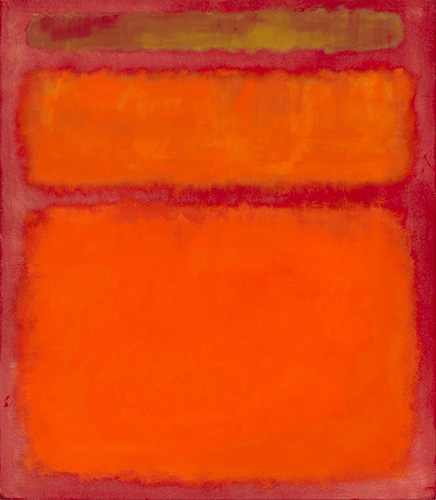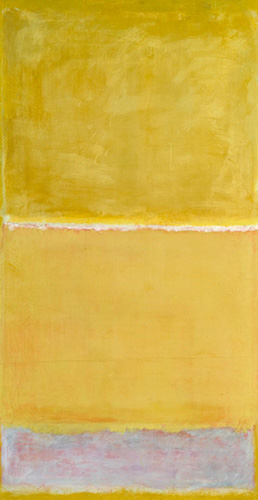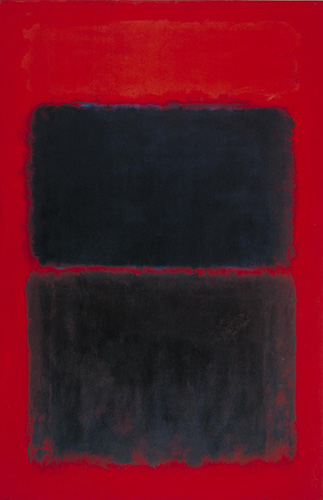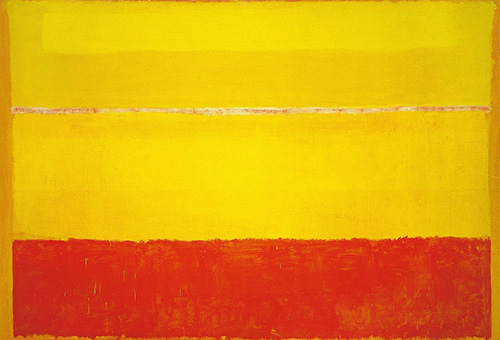.jpg)
Abstract Expressionism in colors by Mark Rothko
ArtWizard, 23.09.2019
“You might as well get one thing straight. I'm not an abstractionist... I'm not interested in the relationships of color or form or anything else. I'm interested only in expressing basic human emotions—tragedy, ecstasy, doom and so on. And the fact that a lot of people break down and cry when confronted with my pictures show that I communicate those basic human emotions... The people who weep before my pictures are having the same religious experience I had when I painted them. And if you, as you say, are moved only by their color relationships then you miss the point.”
Mark Rothko
Mark Rothko was one of the emblematic Abstract artists of the 20th century. Although Rothko was very intelligent and well educated, he had almost no education in paintings and art. He, however became one of the most fashionable and famous artists, member of the American art movement of Abstract Expressionists. Rothko believed that art was truly an expression of emotion and social circumstance and he had a deep distrust for money and material wealth.
Born Markus Rothkowitz in Latvia in 1903, Rothko immigrated to the United States with his family in 1913. In 1921, he entered Yale University, leaving two years later. Like his peers, he found his direction and his place in New York.
Rothko's artistic abilities were essentially self-taught, although he spent little time with the cubist painter Max Weber, who had great influence on the young artist at the time. Weber showed him how to express his emotions with art and this remained the most essential influence and the driving force for Rothko during his entire life and artistic career.
Most of the influences on Rothko’s art were intellectual and highly philosophic. One of them is the one of Friedrich Nietzsche and his work “The Birth of Tragedy” in particular. In Nietzsche's work lies the theory that the lessons of the Greek mythology are the building blocks for a meaningful life, and without the guidance of the tragedies, man is doomed to live an ignorant and joyless existence. Based on this influence, Rothko began to try to free the man from his expressionless being. He claimed that his most colorful works are expressing various emotions, thus trying to reinstate a spiritual and emotional framework for modern living. His works were expressing the human emotions in their most glorious forms. Rothko was so determined to convey these emotions to the spectators of this works, that he ultimately refused to sell canvases to people who "did not react correctly" to the paintings in his gallery, fearing that “people may want to buy my paintings because they were fashionable, not because they are moved by them”.
The artistic path of Rothko went through various stages until the artist attained the style he became famous with – the colorful rectangles. He started with realist paintings, the vast majority of them being made at the beginning of his career, even before he had taken up art as full-time work, and they were largely surrealist in nature. Heavily influenced by the psychologically intriguing ideas promoted by Surrealist artists such as Joan Miro's “Slow Swirl at the Edge of the Sea” (1944), showed Rothko's abilities at their absolute best. In this emotive work, Rothko tried to pare back his reality to express only the bare bones of his life experience.
With time, Rothko's style very quickly morphed away from the realist themes, as he expanded his imagery to include mood inspiring colors of modern abstract artists such as Piet Mondrian, which all resulted in what he considered a purer expression of emotion, less realism but more reality of emotion.
By the mid-1940s, Rothko's work was completely abstract. He had joined the vanguard of the new American artist movement – Abstract Expressionism. This group of mostly American artists, including Jackson Pollock, Barnett Newman and Willem de Kooning had, in fact, very little common ground and was neither purely abstract, nor expressionist. What did unite them was a rebellious feeling of raw emotion, the perception of immediacy of expression and the fact that each of them was an artistic free spirit. Ten years later, Rothko has already mastered his famous style of color rectangles.
Unlike some of his fellow abstract expressionist artists of the day, he had rejected the physical, sometimes violent methods of paint application in favor of a more spiritual and contemplative form of color appreciation. These new paintings were composed of several large rectangular blocks of color place mostly horizontally on the canvas. Sometimes vivid and latterly quite subdued, these paintings conveyed human emotion in all its splendor; from joy and ecstasy to grief and depression. As some of the closest friends of Rothko thought that such style would be a step too far for the general public to understand, it appeared that his genius work had transcended the need for figures or scenes of nature, it had moved through convention and struck right at the living heart of the viewer.
His experiments with provoking the viewers began with his realistic works, one of the most famous of them being the “Scenes in the Subway”, as a series of works, depicting faceless commuters traveling about their business in a very impressionistic way. The way the objects are presented, shows the soulless monotony of the metropolis life in New York.
Some of the most infamous of Rothko's works, however, are “The Seagram's Murals”. They were commissioned by the famous drinks manufacturer to provide murals for their new restaurant in New York. Rothko decided to create forty works in dark red and brown to adorn the walls on the prestigious room. Being a strange viewed socialist in his political and philosophic beliefs, Rothko chose to orientate his blocks of color in an uncharacteristic vertical plane for these murals, as they needed to look to the customers of the restaurant in the most uncomfortable way, so that they do not feel relaxed while eating their over-prices meals. It is interesting fact to know, that Rothko did not leave the works in the newly opened restaurant, as the artist claimed, again being with firm idealistic socialist beliefs, that “he could not continue to work where so many disgusting capitalists would be eating and spending money”. And so, the works have been placed in his studio, from where they went to some of the world greatest museums.
Rothko suffered almost all his life from severe anxiety and his related drinking and smoking habits. After surviving an aneurism, he continued to smoke and drink despite his doctor’s orders, but he did scale back the size of his canvases and switch from oils to acrylic paints to reduce the strain that his painting process placed on his body. In 1970, at 66 years old, the chronically depressed artist committed suicide, leaving behind a body of works that brought him both critical and commercial success during his lifetime.
The artistic legacy to the world of modern art left by Rothko is profound. Never before, or since has an artist so blatantly disregarded the rules of art with such fantastic results. His life and work have influenced the artists all over the world.
.jpg)


_1953.jpg)


